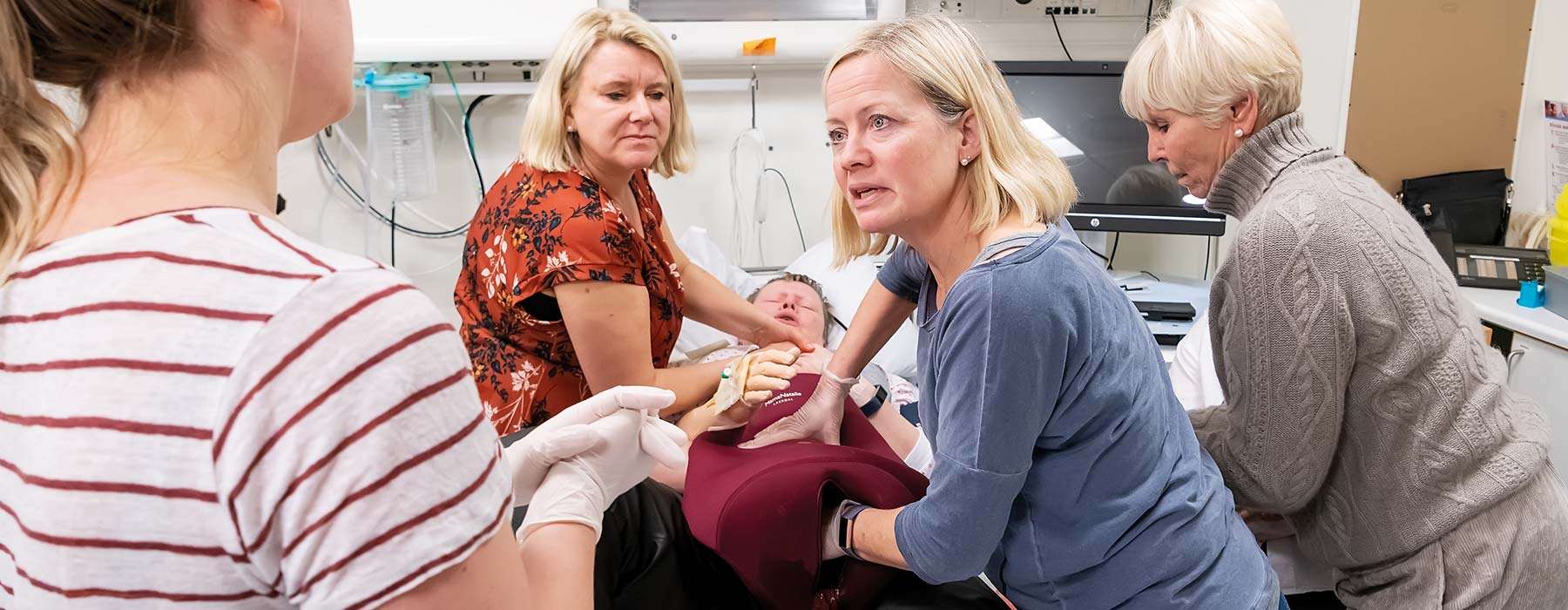How does simulation build readiness for OB emergencies?
2:47
Denne videoen gir verdifulle innsikter fra eksperter om hvordan simulering kan hjelpe helsepersonell med å forberede seg på fødselskomplikasjoner. Du også lese intervjuet på norsk nedenfor.

Roxane Gardner, MD, MSHPEd, DSc
Executive Director, Center for Medical Simulation
Assistant Professor-Obstetrics, Gynecology hos Harvard Medical School
Department of OB/GYN hos Brigham and Women’s Hospital
Division of Adolescent Gynecology hos Boston Children’s Hospital
Department of Anesthesia, Critical Care and Pain Medicine hos Massachusetts General Hospital
Dr. Gardner:
"Jeg har vært involvert i OB-simulering siden 2001, en tid da simulering innen obstetrikk knapt ble brukt. Jeg var veldig heldig som fikk være en del av dette i vårt medisinske miljø i Boston, støttet av vårt ansvarsforsikringsselskap, Harvard Medical CRICO. De hadde sett verdien simulering hadde brakt til anestesi ved å redusere hyppigheten av feilbehandlingskrav. På grunn av de positive tegnene og trendene de observerte i anestesiverdenen, bestemte de seg for å støtte oss i den obstetriske verdenen.
Jeg var i startfasen med å lage et kurs i kommunikasjon og teamarbeid for obstetriske team. Vi jobbet med situasjoner som skulderdystoci: å forstå bedre hvordan man organiserer teamet, hvordan man kommuniserer mer eksplisitt, og å hjelpe folk til ikke å være redde for å si ordene "skulderdystoci". Når du sier det høyt, vet de andre i rommet at "dette er det vi må gjøre", og de kan begynne å hjelpe deg raskere.
Det samme gjelder postpartumblødning. Postpartumblødning er et av de virkelige livsscenarioene som kan snike seg opp på deg. Noen ganger er det katastrofalt – du vet nøyaktig hva som skjer. Men oftere enn ikke, sildrer blødningen sakte og bygger seg opp. Før du vet ordet av det, har det gått så lang tid at noen virkelig har mistet en enorm mengde blod.

Hva gikk bra? Hvordan kan vi gjøre det bedre neste gang? Prøv deretter en annen sak – en annen versjon av postpartum-blødning, for eksempel. Det er mange andre ting som kan skje. Det trenger ikke å være begrenset til fødestuen. Det kan være noe som skjer i postpartumperioden, som en kvinne som kollapser på badet på grunn av en vasovagal reaksjon, eller en kvinne som får et anfall på grunn av forhøyet blodtrykk, kjent som preeklampsi og eklampsi.
En interessant situasjon som faktisk oppstod i vårt medisinske område, var episoder der babyer ble mistet ved et uhell. Når vi undersøkte hva som hadde skjedd, fant vi ut at det var situasjoner der moren var litt for søvnig. Etter keisersnittet snudde noen hodet og var ikke oppmerksom på henne – og babyen falt av sengen.
Noen få varianter av slike hendelser kom til vår oppmerksomhet, og vi klarte å innlemme dem i simuleringene våre. Dette økte bevisstheten rundt de tingene vi må være oppmerksomme på med våre pasienter som nettopp har født."